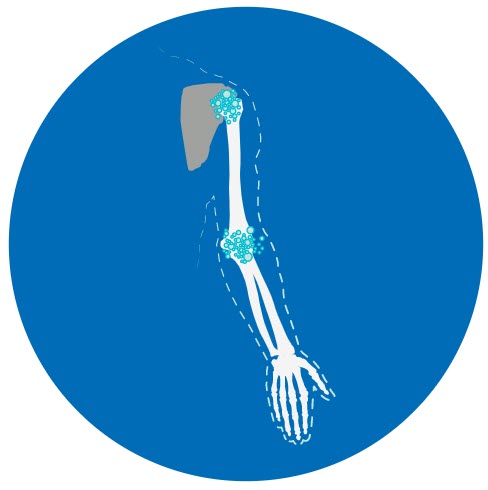Lesson 110
We will talk about decompression sickness, what it is, and how to avoid it
By the end of this section, I should be able to answer these questions:
1. What two primary factors influence how much nitrogen dissolves into my body tissues during a dive?
2. What condition can result if I exceed established depth and time limits while diving, and then surface? What happens in the body that causes this condition?
3. What are nine signs/symptoms of decompression sickness? How soon do they occur after a dive?
4. Besides dive time and depth, what nine secondary factors are thought to influence how the body absorbs and releases dissolved nitrogen?
Nitrogen Absorption
You’ve already learned that your time underwater has limits in addition to how long your air lasts, how warm you are or whether you’re tired. These next limits relate to nitrogen gas that is in solution in your body.
During a dive, the increased pressure causes nitrogen from your breathing air to be absorbed, dissolving into your body tissues. The greater the pressure – that is the deeper you are – the faster nitrogen dissolves into your tissues. And, the longer you’re underwater, the more time you give nitrogen to dissolve into your tissues. Therefore, the two primary factors that influence how much nitrogen you absorb during a dive are depth (pressure) and time.
Decompression Sickness
Your tissues don’t use the nitrogen you absorb, so when you ascend and the pressure gets lower, there is more nitrogen than can remain dissolved in your body tissues. The excess nitrogen therefore dissolves out of your body tissues. Normal blood circulation carries the excess nitrogen to your lungs, which exits as you exhale.
If the amount of excess nitrogen is within accepted limits, your body normally gets rid of it harmlessly over the next several hours. You use your dive computer (or dive tables like the RDP or eRDPML) to stay within accepted nitrogen limits. You’ll learn about doing this and about practices like safety stops that help you keep nitrogen levels within accepted limits.

If the excess nitrogen in your body tissues is too high, when you ascend and surface, the nitrogen may come out of solution faster than your body can eliminate it. This can cause nitrogen bubbles to form within your blood and body tissues, much like bubbles form when you open a soda bottle and release the pressure.
Bubbles forming in the body cause a very serious medical condition called decompression sickness (DCS for short). It is sometimes called “the bends.” The signs and symptoms of DCS depend upon where bubbles form in the body. They include:
- Paralysis
- Dizziness
- Tingling
- Joint and limb pain
- Shock
- Numbness
- Difficulty breathing
- Weakness and prolonged fatigue
- In severe cases, unconsciousness and death
DCS signs and symptoms may be clear and obvious, but they may also be subtle, like a mild to moderate, dull ache (often, but not necessarily, in the joints), mild to moderate tingling or numbness, weakness and prolonged fatigue. They usually occur 15 minutes to 12 hours after a dive, though they can occur before surfacing, and they can occur after 12 hours. The signs and symptoms may be persistent or be intermittent. Treat all cases of suspected DCS as serious, no matter how serious or mild the signs/symptoms seem to be.

Secondary Factors
Although time and depth are the primary variables that affect whether bubbles will form in the body and cause decompression sickness, other factors influence how your body absorbs and releases excess nitrogen. Physiologists think that when present, the following secondary factors can contribute to developing DCS:
- Fatigue
- Dehydration
- Cold
- Poor fitness/high body fat
- Illness
- Injuries
- Age
- Alcohol consumption before or after a dive
- Vigorous exercise before, during or immediately after the dive
Section Five discusses how exposure to altitude (by flying, or driving through mountains) after diving can also contribute to getting DCS, and its first aid and treatment.
knowledge review and quiz
Comments

I'll take you diving!
Copyright © Larry Wedgewood Scuba Instruction All Rights Reserved








